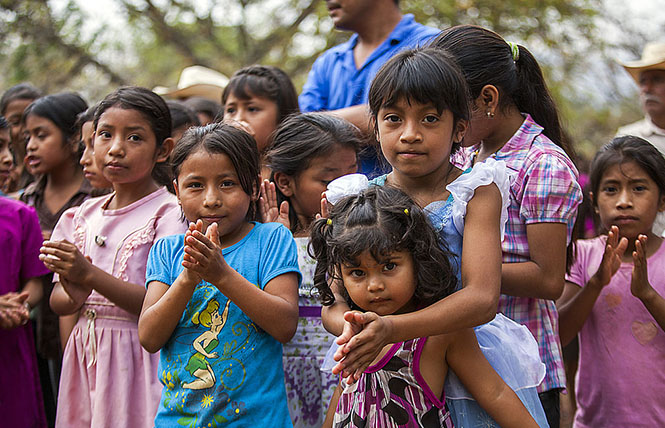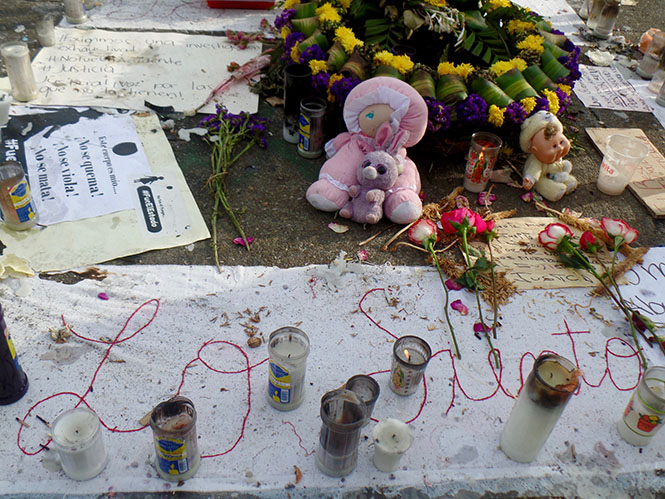Guatemala’s civil war has created a legacy of rape and teen pregnancy
Guatemala City—It’s not a stretch to say that the reproductive rights of women and girls are not fully recognized in Guatemala. On top of that—or perhaps because of it—Guatemala has one of the highest rates of teen pregnancy in Latin America, where one in three girls becomes a mother before reaching the age of 18, according to a 2014 UNICEF report.
In 2016, the local Sexual and Reproductive Health Observatory, or OSAR, which was formed in an alliance between the Guatemalan government and academic and medical institutions, found that the government’s National Registry of Persons registered almost 80,000 births by girls and teenage mothers, 2,500 of whom were between the ages of 10 and 14, and more than 77,000 of whom were between 15 and 19.
And the majority of these cases of teen pregnancy are due to rape: 80 percent of the perpetrators of sexualized violence against girls under the age of 14 are close family members, said Linda Valencia, the global program officer for Planned Parenthood in Guatemala. No matter what, every pregnant girl under the age of 14 is considered a victim of sexualized violence, according to Guatemalan law.
“As women, we have lived in violence since we were born,” said Valencia.

In Guatemala, girls gather for a ceremony to break ground for a school. The country has one of the highest rates of teenage pregnancy in Latin America. (Staff Sgt. Justin Morelli)
Girls in Guatemala are often born into poverty and male chauvinism, and without access to sexual education, no opportunities for schooling, and with pervasive societal sexualized violence, said Mirna Montenegro, the director of OSAR. All of this, combined with the country’s violent past—more than 30 years of civil war—has left girls at serious risk, both in terms of their health and the ability to live happy, productive lives.
The probability of becoming pregnant is seven times higher in adolescents who do not have access to education, and three times higher in teenagers who come from the poorest parts of the country, according to the 2014-2015 National Maternal and Child Health Survey, conducted by OSAR.
Teen pregnancy afflicts the region as a whole: Guatemala has a population of about 16 million. Compared to the rest of the region, the country ranks fourth in the UNICEF report alongside El Salvador, with 24 percent of teenagers who are already mothers. Nicaragua leads the list in the region with 28 percent; Honduras with 28 percent; and the Dominican Republic with 25 percent.
Over the past five years at least, Guatemala has progressed in monitoring these pregnancies, Montenegro said. The government has implemented care measures, whose reach and efficiency is debatable, but, she said, it includes sex education, methods of contraception, and family therapy. Authorities have also worked to denormalize pregnancy and—most important—have begun calling rape a crime.
Still, in order to understand the problem, it’s necessary to know how decades of war helped create this entrenched violence toward girls.
Sexualized violence, an aftermath of internal armed conflict For Paula Barrios, a lawyer for the group Mujeres Transformando el Mundo (Women Transforming the World) in Guatemala, sexualized violence is part of the aftermath of the country’s civil war, which began in 1960. “There is a structural violence that stems from the internal armed conflict,” Barrios said. “Since then, the interest of successive Guatemalan governments has always been to remain silent—to make us unaware of what really happened and forget the massacres or the sexual violence committed against women as a weapon of war.”
Recognition of what happened to women in the war “has not been part of the state’s plans and policies to move towards lasting peace,” she said.
Valencia, who lived through some of the conflict, recalled that girls and women “were left in the midst of a conflict where both sides, both the army and the guerrillas, took them as bounties of war. They came to a town and began raping women.”
“After what we lived, sequels remain,” she said.
When a peace accord was signed in 1996, Guatemalans faced problems that added to the post-conflict challenge: the emergence of gangs, drug trafficking, and human trafficking in Central America, which only worsened the situation for women and girls in the country and the region.
With all this, impunity has helped normalize sexualized violence after the conflict. Perpetrators from the war were not prosecuted, according to a 2011 study by Cornell Law School, and some even continued to work for Guatemalan police and security forces. And high levels of domestic violence and femicide—the murder of women because of their gender—the study said, “are intricately linked to the country’s past internal conflict.”
Over the years, as laws were put in place to criminalize gender-based and sexualized violence, impunity remained high, and may have even gotten worse. In 2010, a report on women’s rights in the country by the Office of the United Nations High Commissioner for Human Rights (OHCHR) said that a “lack of investigation and poor evidence-gathering mechanisms suggest a diminished importance given to violence against women.” During the first 10 months of 2014, according to data submitted in 2015 by U.S.-based nonprofit organization Advocates for Human Rights to OHCHR, 8,871 cases of sexual or physical assault were reported to the Guatemala Public Ministry, but there were only 304 convictions. The rate of impunity for femicide remains at around 98 percent, according to statistics from UN Women.
With little to no punishment to stem the crisis, Barrios said, a culture of gender-based and sexualized violence continues against children and adolescents. One particularly concerning issue, she said, is the recruitment of former army soldiers to provide security in state-run shelters for children, such as Hogar Seguro Virgen de la Asunción in San Jose de Pinula, a city about 13 miles from Guatemala City. If men who may have perpetrated sexualized violence during the war are now meant to protect children, who knows how safe that is?

A tribute in Guatemala to a fire that killed 41 girls. Nine survived. They were all pregnant. (Natalia Bonilla)
In March, a fire at Hogar Seguro Virgen de la Asunción claimed the lives of 41 girls who had sought refuge at the shelter after fleeing their homes or being abandoned by their parents. Of the children that survived the fire, nine girls were pregnant, all between the ages of 13 and 17.
With pregnancy, there are few options for recourse. Abortion is prohibited in Guatemala unless it is proven that there is a danger to the mother’s life. Yet few teenagers have access to such an evaluation. They are more likely to give birth. Then, because they have limited resources to care for the child, they sometimes abandon their babies in state shelters.
And the cycle continues.
While there are programs run by civil society and private institutions that provide sexual and reproductive health care and education services in rural areas, advocates say that greater government support is needed to not only reduce sexualized violence but to also prosecute the perpetrators of the crimes.
“We cannot normalize that girls are 9- or 10-year-old are mothers,” Barrios said.
More articles by Category: Girls, International, Violence against women
More articles by Tag: Sexualized violence



























